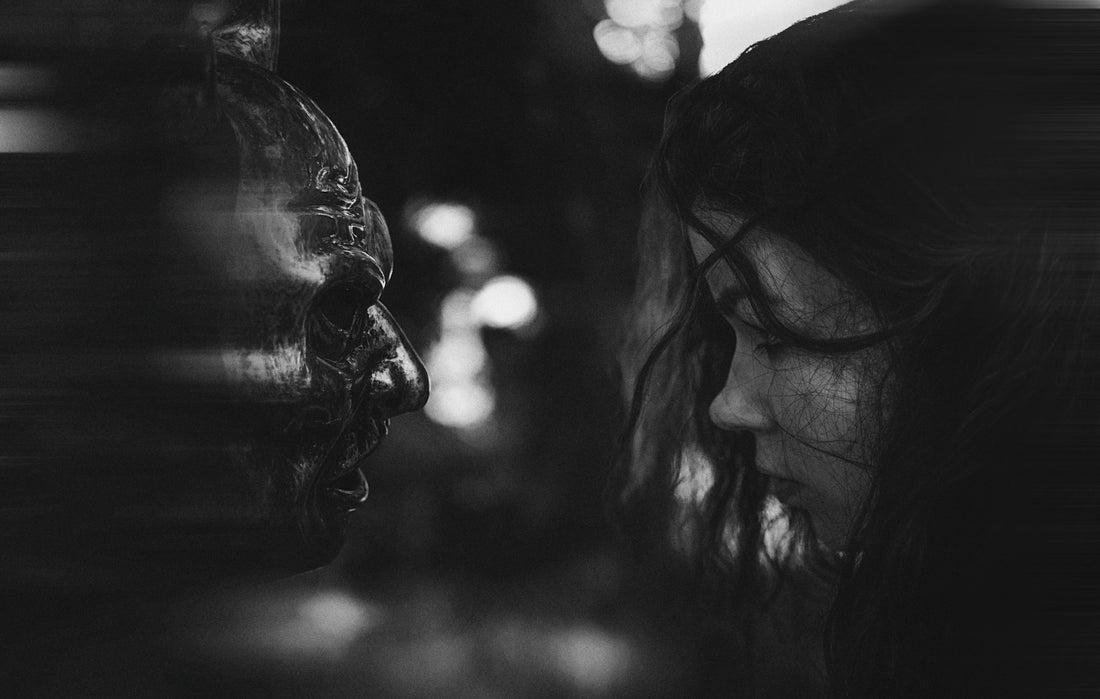
What is Satanism?
Share
Welcome to the world of Satanism, where rebellion meets ritual, and individualism reigns supreme. Far from the lurid tales of devil worship and black magic spread by sensationalist tabloid media, Satanism is a complex movement challenging conventional notions of morality, spirituality, and belief.
In this blog, we delve into the fundamentals of Satanism, uncovering its rituals and ceremonies, debunking common misconceptions, and tracing the footsteps of notable Satanists throughout history.
From the provocative symbolism of Anton LaVey's Church of Satan to the subversive activism of the Satanic Temple, we explore the intricate pathways of Satanic philosophy and practice, looking at the diverse beliefs and traditions that define this movement.
What is Satanism?
Satanism embodies a philosophy of individualism, non-conformity, and a healthy disdain for the perceived blandness of mainstream society. It's essential to recognise that self-identified Satanism is a relatively recent phenomenon, with its roots tracing back to 1966.
While Satanism may seem like a singular entity, it shares historical connections with various other belief systems, including paganism, ceremonial magic, and dark entities such as Set, Lilith, Hecate, and Chaos, all stemming from the realms of the occult and the Left Hand Path milieu. These connections and overlaps showcase the diverse influences and interpretations within Satanism.
One of the defining characteristics of Satanism is its emphasis on the individual. Satanists champion autonomy and self-determination, rejecting the idea of blindly adhering to societal norms or religious dogma. This focus on personal agency encourages practitioners to question authority and forge their own paths in life, guided by their values and desires.
Non-conformity is another key tenet of Satanism. Satanists embrace their uniqueness and refuse to conform to the expectations imposed by mainstream society. They revel in their individuality, celebrating their differences rather than seeking validation through conformity. This rejection of societal norms can manifest in various ways, from unconventional lifestyles to provocative forms of expression.
Satanism encourages a healthy scepticism towards authority and tradition. Instead of blindly following established norms, Satanists critically evaluate beliefs and practices, embracing those that resonate with their personal philosophies while rejecting those that do not. This critical approach fosters intellectual curiosity and promotes personal growth, empowering individuals to carve out their identities free from the constraints of convention.
Satanism offers a unique perspective on life, one that celebrates individualism, non-conformity, and critical thinking. By embracing these principles, Satanists strive to live authentic and fulfilling lives, guided by their inner truths rather than external dictates.
Are there different types or branches of Satanism?
Satanism is a broad belief system with many types and branches. Early Satanism was influenced by figures like the French ceremonial magician Éliphas Lévi. He popularised symbols such as the Sabbatic Goat, also known as the Goat of Mendes or Baphomet, in the late 1800s. Modern Satanism began in 1966 with Anton Szandor LaVey founding the Church of Satan (CoS). LaVey's teachings, published in the Satanic Bible in 1969, present Satan not as a literal deity but as a symbolic rebel challenging arbitrary authority.
The Satanic Temple, established in 2012, sees Satan as a symbol of rebellion against unfair authority and societal norms. Members view Satan not as a supernatural entity or a symbol of evil but as a metaphor for pragmatic scepticism, rational reciprocity, personal autonomy, and curiosity.
Another important branch of Satanism is the First Satanic Church, founded by Karla LaVey after the death of her father, Anton LaVey. This church is known for its exclusivity and its annual Black X-Mass concert in San Francisco.
Theistic Satanists, who lean towards devil worship, are on a different end of the spectrum. The Temple of Set, founded in 1975 by former Church of Satan members, is one such group. The Temple of Set focuses on enlightened individualism and personal growth through education, experimentation, and initiation.
Luciferians, different from traditional Satanists, honour Lucifer as a symbol of enlightenment, liberation, and personal empowerment. They see Lucifer not as a devil but as a guiding spirit for illumination and self-realisation.
There are also those who practise personal Satanism. These individuals identify as Satanists based on their connection to the concept of Satan rather than following organised groups or doctrines. They embrace the rebellious and individualistic spirit of Satanism, valuing autonomy and self-expression in their own ways.
How does Satanism differ from Occultism?
Satanism and occultism are often linked in popular culture, but they are distinct belief systems with unique practices and philosophies. Both might involve hidden knowledge and rituals, yet they differ fundamentally in their core ideas and objectives.
Satanism, as we've explored, includes various beliefs centred around Satan. Modern Satanism, especially the atheistic type popularised by Anton LaVey, denies the existence of a literal Satan. Instead, it views Satan as a symbol of rebellion and individualism, stressing personal autonomy, critical thinking, and nonconformity. Satanists might perform rituals and ceremonies, but these acts are usually symbolic, meant to enhance personal empowerment rather than worship any deity.
Occultism, on the other hand, involves the study and practice of hidden knowledge to uncover spiritual truths or harness supernatural forces. Occult traditions are diverse, including practices like divination, astrology, alchemy, and ceremonial magic. Unlike Satanism, which centres on individualism and personal power, occultism aims to understand and influence unseen forces for spiritual growth, enlightenment, or practical outcomes.
A significant difference between Satanism and occultism is their approach to morality and ethics. Satanism often embraces moral relativism, focusing on personal responsibility and pursuing individual desires. In contrast, occultism might incorporate ethical frameworks from specific traditions, such as karma or the law of attraction.
Their symbols and icons also differ. Satanism may use symbols like the inverted pentagram or the Sigil of Baphomet, associated with rebellion and defiance. Occultism, however, draws from a broader range of symbols and archetypes from various cultures and religions, depending on the practitioner's specific beliefs and practices.
While they share some superficial similarities, Satanism and occultism follow different paths with distinct goals, philosophies, and practices. Satanism is about personal empowerment and defiance of societal norms, whereas occultism seeks hidden knowledge and spiritual truths through diverse practices and traditions.

What are the symbols and rituals associated with Satanism?
Symbols and rituals are central to Satanism, acting as powerful tools for self-expression, empowerment, and ritual observance. It's crucial to address misconceptions about Satanism, particularly those related to unfounded rumours of sacrifice and abuse that fueled the Satanic Panic movement of the 1980s and still linger today. In reality, Satanic rituals are diverse, ranging from solemn ceremonies to personal meditations. They are typically conducted by individuals or small groups, focusing on personal growth rather than any harmful activities.
Anton Szandor LaVey, founder of the Church of Satan, detailed various rituals and ceremonies in his 1972 work, "The Satanic Rituals." These group-oriented rituals draw inspiration from diverse sources such as the Yezidis, Freemasons, Knights Templar, and even fictional works. They symbolically represent Satanic principles and beliefs, emphasising the individual's autonomy and personal power.
Another key figure in Satanic ritualism is Michael Aquino, who played a crucial role in establishing the Temple of Set. In 1975, during a significant ritual, Aquino claimed to have received guidance from Satan, leading to the reconsecration of his temple and order in the name of Set, a figure linked with darkness and enlightenment in occult traditions.
While some Satanists participate in group rituals, many prefer solitary practices, performing their religious activities in private. In today's digital age, most interaction among Satanists happens online, through websites, forums, and email, enabling the exchange of ideas and experiences within a virtual community.
Several iconic images are commonly associated with Satanism. These include the inverted pentagram, Baphomet, inverted crosses, the Sigil of Lucifer, and the alchemical symbol for black sulphur, known as the Leviathan Cross or Satan's Cross. These symbols represent Satanic principles, embodying rebellion, enlightenment, and individualism for practitioners.
Is Satanism a religion?
The question of whether Satanism qualifies as a religion is debated among scholars, practitioners, and the general public. Though it does not fit traditional religious frameworks, it is increasingly seen as a distinct religious movement with formal organisations and churches dedicated to Satan and Satanic principles.
Satanism's emergence as a recognised religious movement dates back to the 1960s with the establishment of churches like the Church of Satan. The Church of Satan operates as a centralised religious institution with its own doctrines, rituals, and structure. Despite its atheistic stance and rejection of the supernatural, it functions as a religious entity, offering community and promoting Satanic values.
The Satanic Temple, founded in 2012, takes a non-theistic approach, viewing Satan as a symbol of rebellion against unjust authority and social injustice. Unlike the Church of Satan, the Satanic Temple focuses on activism and advocacy for secularism, individual freedoms, and social justice. It engages in legal battles, public demonstrations, and community outreach, positioning itself as a voice for marginalised groups and a defender of civil liberties.
Both organisations show how Satanism can function as a religion, though in different ways. The Church of Satan has a traditional religious structure with centralised leadership and organised rituals. The Satanic Temple adopts a more decentralised, activist approach, using Satanism for social and political activism. Despite their differences, both provide ways for individuals to engage with Satanic philosophy, participate in rituals, and identify as members of a religious community.
Satanism can be considered a religion in that it offers a framework for spiritual exploration, community engagement, and ethical deliberation, even if it diverges from traditional religious norms. As formal organisations dedicated to Satan and Satanic principles continue to grow, Satanism will likely gain further recognition as a legitimate religious movement with its own identity and practices.
Who are the most famous satanists in history?
Throughout history, several individuals have become closely associated with Satanism through their founding of organisations, public statements, or connections with Satanic imagery and philosophy. As mentioned earlier, Anton LaVey, the founder of the Church of Satan, stands out among these figures. LaVey, a contentious figure both in mainstream society and within the Satanist community, is often credited with popularising modern Satanism and establishing its core principles.
Following in her father's footsteps, Karla LaVey, one of Anton LaVey's daughters, founded the First Satanic Church after his death, continuing his legacy within the Satanic community. Conversely, Zeena Schreck, another of LaVey's daughters, renounced Satanism and embraced Tibetan Tantric Buddhism, illustrating the diverse paths individuals associated with Satanism may take.
Aleister Crowley, the British occultist, is often mentioned in discussions of Satanism, even though he denied being a Satanist. Despite his denial, Crowley's use of Satanic imagery and philosophy, such as calling himself "the Beast 666" and incorporating themes of rebellion and self-deification into his work, has led many to associate him with Satanism. His influence on later Satanists, especially Anton LaVey, is significant.
Notable figures in the entertainment industry have also been linked to Satanism, often through sensationalised or speculative means. Actress Jayne Mansfield, for example, was famously photographed with Anton LaVey during what appeared to be a Satanic ritual. However, it is widely believed to have been a publicity stunt rather than a genuine expression of religious belief.
In music, some metal artists have embraced Satanic imagery and themes, strengthening the link between Satanism and heavy metal culture. Bands like Watain, Behemoth, and King Diamond are known for incorporating Satanic symbolism into their music and performances, fuelling the cultural fascination with Satanism in popular music.
These individuals represent only a fraction of those linked to Satanism throughout history. Their influence and notoriety have significantly shaped public perceptions and discussions about the movement, cementing their places in the history of Satanism.

How do Satanists view the concept of Satan?
Satanism presents a variety of perspectives on Satan, ranging from symbolic to more literal beliefs, depending on the specific tradition or organisation. Generally, Satanists see Satan not as a supernatural entity to be worshipped or feared, but as a symbol of rebellion, individualism, and enlightenment.
The Church of Satan adopts an atheistic view, considering Satan as a symbol of personal empowerment and defiance against societal norms and religious dogma. LaVeyan Satanists regard Satan as a representation of human nature and desires, rejecting the idea of a literal devil while celebrating the archetype of the rebellious anti-hero.
The Satanic Temple also employs a non-theistic interpretation of Satan, using the figure as a metaphor for resistance against tyranny and injustice. For its adherents, Satan represents the pursuit of individual freedoms, secular governance, and social equality, serving as a focal point for activism and advocacy.
In contrast, the Temple of Set, founded by Michael Aquino in 1975, takes a more esoteric approach to Satan. Aquino claimed that Satan revealed his true name to be Set, drawing from the ancient Egyptian deity associated with chaos, darkness, and individualism. Followers of the Temple of Set view Set not as a malevolent figure but as a symbol of personal transformation and enlightenment, embodying principles of self-deification and spiritual evolution.
While the Church of Satan and the Satanic Temple emphasise Satan as a symbolic archetype, the Temple of Set incorporates a more mystical and metaphysical understanding, rooted in ancient Egyptian mythology and esoteric traditions. Despite these differences, all three organisations share a focus on individualism, rationalism, and the rejection of authoritarianism, highlighting the multifaceted nature of Satanic philosophy. Ultimately, Satanism provides a framework for personal growth, empowerment, and self-discovery, regardless of specific beliefs about Satan.
Can someone be both a Satanist and an atheist?
Yes, it is entirely possible for someone to identify as both a Satanist and an atheist, especially within the framework of LaVeyan Satanism. This branch is characterised by its atheistic perspective, rejecting the existence of a personal God or devil. Instead, LaVeyan Satanists see Satan as a symbol of human nature, embodying qualities such as individualism, rebellion, and personal empowerment.
For LaVeyan Satanists, Satan is not worshipped as a deity but embraced as a metaphorical figure representing the rejection of societal norms and the pursuit of individual desires. This atheistic stance allows LaVeyan Satanism to offer a way for non-believers to engage with Satanic philosophy and principles without needing supernatural beliefs or rituals.
Being a Satanist in the context of LaVeyan Satanism does not require adherence to any religious dogma or belief in the supernatural. It focuses on embracing Satanic principles like self-interest, rationality, and personal autonomy while rejecting superstition and blind obedience to authority.
By identifying as both a Satanist and an atheist, individuals can align with the philosophical and ethical teachings of Satanism while maintaining a rational, evidence-based worldview. This allows for a unique expression of personal identity and values, free from the constraints of traditional religious doctrine and superstition.
Ultimately, whether one chooses to identify as a Satanist, an atheist, or both is a matter of personal belief and conviction. LaVeyan Satanism provides a non-theistic alternative for those who wish to explore Satanic philosophy and principles within a rational and secular framework, showing the compatibility of Satanism with atheism and non-belief.
What are the ethical guidelines in Satanic practices?
Satanism does not follow traditional religious ideas of morality set by external authorities or supernatural beings. Instead, Satanic ethics are based on principles of individualism, rationality, and self-interest, focusing on personal responsibility and autonomy.
One central theme of Satanic ethics is self-preservation. Satanists prioritise their own well-being and happiness, viewing self-care and self-fulfilment as essential to a fulfilling life. This emphasis encourages individuals to prioritise their own needs and desires without guilt or shame, fostering empowerment and autonomy.
Satanism also promotes rational self-interest, urging individuals to pursue their goals and aspirations without being held back by societal norms or moral constraints. Decisions are based on reason and logic rather than blind obedience to authority or tradition. This rational approach allows individuals to assess situations objectively and act in their own best interests.
Personal responsibility and accountability are crucial in Satanic ethics. Satanists reject the idea of external scapegoats or divine judgement, recognising that they alone are responsible for their actions and their consequences. This focus on personal accountability encourages individuals to take ownership of their choices and strive for excellence in all aspects of their lives.
Additionally, Satanism endorses the concept of social Darwinism, viewing competition and struggle as natural and inevitable parts of life. Satanists believe in embracing challenges and overcoming obstacles through strength, cunning, and perseverance. This competitive mindset motivates individuals to strive for success and recognise the value of hard work and determination.
This can be summarised in the 9 Satanic Statements, written by LaVey in 1989, an alternative to the traditional 10 Commandments.
- Satan represents indulgence instead of abstinence!
- Satan represents vital existence instead of spiritual pipe dreams!
- Satan represents undefiled wisdom instead of hypocritical self-deceit!
- Satan represents kindness to those who deserve it instead of love wasted on ingrates!
- Satan represents vengeance instead of turning the other cheek!
- Satan represents responsibility to the responsible instead of concern for psychic vampires!
- Satan represents man as just another animal, sometimes better, more often worse than those that walk on all-fours, who, because of his “divine spiritual and intellectual development,” has become the most vicious animal of all!
- Satan represents all of the so-called sins, as they all lead to physical, mental, or emotional gratification!
- Satan has been the best friend the Church has ever had, as He has kept it in business all these years!
The ethical guidelines in Satanic practices focus on individualism, rationality, and self-interest. By emphasising self-preservation, rational self-interest, and personal responsibility, Satanists aim to lead fulfilling and empowered lives. They reject external moral authority and embrace their true selves.

Are there Satanic rituals or ceremonies?
Satanism includes rituals and ceremonies as essential parts of its practice and philosophy. These rituals are detailed in "The Satanic Rituals,," a companion to Anton LaVey's "The Satanic Bible," which provides a guide to Satanic ceremonial magic. One notable ritual in "The Satanic Rituals" is "Le Messe Noire," or the Black Mass, a ceremonial inversion of traditional Christian liturgy to celebrate Satanic principles.
Other rituals in "The Satanic Rituals" include "The Ceremony of the Stifling Air," "Das Tierdrama," "Die elektrischen Vorspiele," "Homage to Tchort," "The Statement of Shaitan and Wordless Rite of Dedication," "The Ceremony of the Nine Angles," "The Call to Cthulhu," and various baptismal ceremonies for adults and children. These rituals express Satanic philosophy, offering practitioners opportunities for self-exploration, empowerment, and transformation.
Additionally, the Church of Satan practises "Greater Magic," which involves self-transformational psychodrama. Greater Magic facilitates emotional catharsis and personal growth, helping individuals purge unwanted emotional baggage and obstacles that hinder their pursuit of joy and fulfilment. The elaborate nature of Satanic ritual is meant to evoke emotional stimulation rather than worship of any external deity, serving as an "intellectual decompression chamber" for practitioners to engage with their innermost desires and motivations.
The three basic types of Satanic Ritual, as outlined by the Church of Satan, are for Compassion, Lust, and Destruction. Compassion rituals aim to foster empathy and kindness towards oneself and others. Lust rituals release unrequited sexual urges and desires. Destruction rituals cleanse oneself of anger and resentment towards those who have wronged them.
Satanic rituals and ceremonies play a significant role in Satanic practice, providing practitioners with opportunities for self-expression, empowerment, and personal transformation within the framework of Satanic philosophy and principles.
What are the common misunderstandings about Satanism and its followers?
One of the most widespread misunderstandings about Satanism is the notion of ritual abuse, which became prominent during the Satanic Panic of the 1980s and early 1990s. This moral panic, fueled by sensationalist media and unfounded allegations, led to widespread hysteria about supposed Satanic cults engaging in ritualistic abuse and human sacrifice. Despite the lack of credible evidence, these claims contributed to a climate of fear and paranoia, resulting in numerous false accusations, wrongful convictions, and the disruption of innocent lives. In reality, most Satanists do not engage in criminal activities or harmful behaviours. The notion of Satanic ritual abuse has been widely debunked by scholars, law enforcement agencies, and mental health professionals.
Another common misconception is that Satanism promotes violence, criminality, and immorality. Most Satanists adhere to ethical principles grounded in individualism, rationality, and personal responsibility. While some may use provocative imagery and rhetoric as a form of self-expression or social critique, the majority of Satanists reject violence and coercion as contrary to their beliefs. Furthermore, Satanism emphasises the importance of consent, autonomy, and respect for others, advocating for ethical behaviour and mutual respect in all interactions.
Many people also mistakenly believe that Satanists worship Satan as a literal deity and engage in devil worship or black magic. In reality, Satanism encompasses a range of beliefs and practices. Some adherents see Satan as a symbolic figure representing rebellion, individualism, and enlightenment rather than a supernatural being. While certain Satanic traditions may include rituals and ceremonies, these are typically symbolic and meant to reinforce personal empowerment, not worship of a deity.
Misconceptions about Satanism stem from sensationalised media portrayals, cultural biases, and misunderstandings of Satanic philosophy and practices. By challenging these misconceptions and promoting a better understanding of Satanism as a legitimate religious movement with its own distinct beliefs and values, we can work towards dispelling fear and stigma and fostering a more inclusive and informed society.
How has Satanism been portrayed in popular culture and media?
Satanism has frequently appeared in popular culture and media, often depicted in various forms ranging from sinister cults to misunderstood subcultures. One notable portrayal is in the hit television series "Stranger Things," where the character Eleven encounters a group practising dark rituals in service to a malevolent entity known as the Mind Flayer. This depiction taps into the trope of Satanic cults as malevolent forces threatening society, perpetuating fears and misconceptions about Satanism.
In addition to television, Satanism has appeared in literature and film, with notable examples including the Hellfire Club, a notorious secret society in 18th-century England associated with occult practices and debauchery. This portrayal of Satanism as a subversive and hedonistic movement has influenced countless works of fiction, inspiring fascination with the darker aspects of human nature.
Satanism has also featured in popular television shows such as "The X-Files," with the episode "Syzygy" exploring themes of witchcraft and occultism in a small town plagued by bizarre phenomena. This depiction of Satanism as a mysterious and malevolent force reflects the enduring fascination with the supernatural and the unknown in popular culture.
Documentaries like "Hail Satan?" have provided insight into contemporary Satanism, offering a look at the beliefs and practices of modern Satanic organisations such as the Satanic Temple. Through interviews with members and leaders, the documentary explores the motivations behind the organisation's activism and advocacy for secularism, individual freedoms, and social justice, challenging stereotypes and misconceptions about Satanism.
Satanism has also significantly influenced music, especially in the realms of metal and rock. Bands such as Black Sabbath, Slayer, and Marilyn Manson have incorporated Satanic imagery and themes into their music and performances, using symbolism associated with Satanism to provoke and challenge societal norms. This intersection of Satanism and music has contributed to the cultural perception of Satanism as a rebellious and countercultural movement, attracting both admiration and controversy.
Satanism has been portrayed in various forms in popular culture and media, reflecting society's fascination with the darker aspects of human nature and the unknown. Whether depicted as sinister cults, misunderstood subcultures, or symbols of rebellion, Satanism continues to captivate the imagination and spark debate in the public consciousness.

Is there a holy book in Satanism?
Sort of! As mentioned earlier, in Satanism, particularly within LaVeyan Satanism, there is a key text known as "The Satanic Bible," authored by Anton Szandor LaVey and first published in 1969. While not exactly a holy book in the same way as the Bible or Quran, it’s an influential book that serves as the primary religious scripture for members of the Church of Satan. "The Satanic Bible" is divided into four main sections: "The Book of Satan," "The Book of Lucifer," "The Book of Belial," and "The Book of Leviathan," each offering insights into Satanic philosophy, rituals, and ethics.
"The Book of Satan" lays out the foundational principles of Satanic philosophy, emphasising individualism, self-interest, and personal empowerment. It encourages individuals to embrace their true selves and pursue their desires without guilt or shame, rejecting societal norms and moral hypocrisy.
"The Book of Lucifer" explores Lucifer as a symbol of enlightenment and rebellion against tyranny, urging Satanists to challenge authority and question established beliefs. It advocates for rationality, critical thinking, and intellectual freedom as paths to personal growth and self-fulfilment.
"The Book of Belial" focuses on indulgence and gratification, encouraging Satanists to embrace their carnal desires and pursue pleasure without restraint. It celebrates the joys of life and promotes living authentically and unapologetically, rejecting asceticism and self-denial.
"The Book of Leviathan" discusses social dynamics and power, advocating for strategic thinking and assertiveness in interpersonal relationships. It encourages Satanists to assert themselves and pursue their goals with confidence and determination, recognising the importance of strength and self-assurance in navigating human interactions.
Overall, "The Satanic Bible" serves as a comprehensive guide to Satanic philosophy and practice, providing insights into the beliefs, rituals, and ethical principles of LaVeyan Satanism. While not considered sacred or divine in the traditional sense, it holds significant cultural and religious importance for adherents of Satanism, offering a framework for personal empowerment, self-discovery, and spiritual growth.
How do Satanists view the concept of good and evil?
Satanists have a different view of good and evil compared to traditional religious beliefs. They don't follow fixed moral rules set by higher powers. Instead, they see ethics as relative and based on personal perspective.
In Satanism, morality is subjective. It's influenced by individual views, cultural norms, and personal experiences. There are no absolute moral truths. What's "good" or "evil" can change depending on the situation and society.
Satanists value personal freedom and self-interest. They believe in pursuing desires and goals without guilt. There's no belief in original sin or inherent evil, only self-empowerment and self-responsibility.
Without divine judgement, Satanists take full responsibility for their actions. They know their choices have consequences and accept them. They don't believe in moral absolutes but understand the complexity of human behaviour.
The concepts of good and evil are seen as flexible. What one person sees as evil, another might see as good. This view allows for more personal freedom and less adherence to strict dogma.
Satanists reject the clear-cut idea of good versus evil. They prefer a practical and flexible approach to ethics. By valuing personal autonomy and rationality, they aim to live true to themselves. They challenge traditional views of morality, focusing on personal choice and freedom.














